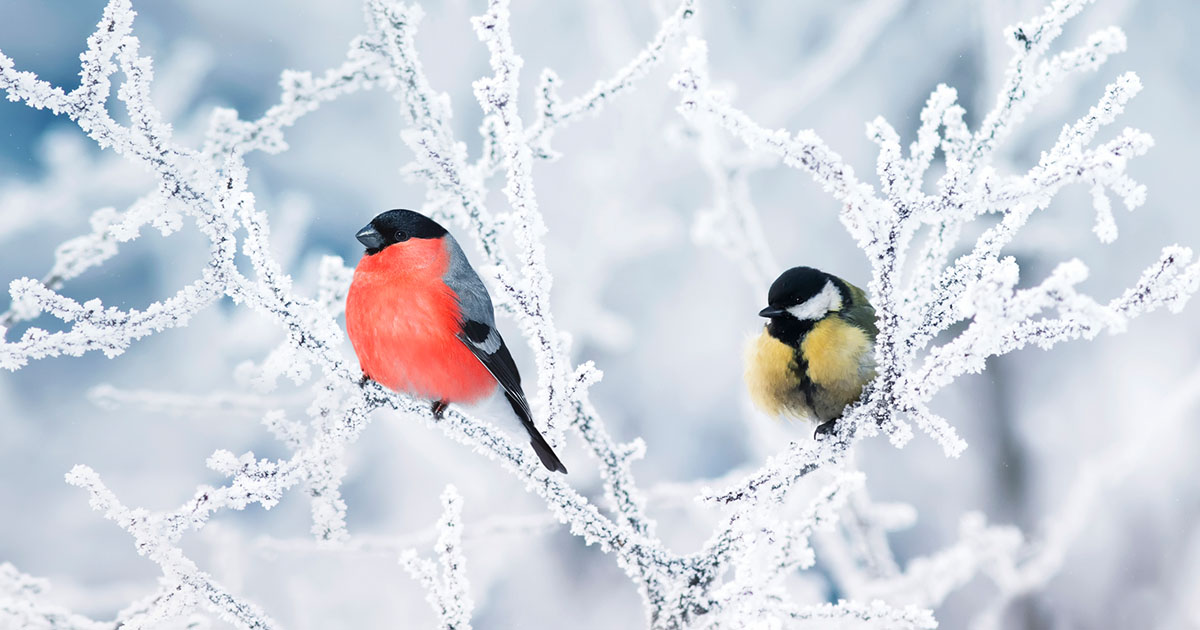How to go Bird Watching in Winter

Bird watching in winter is a great pastime and you can see many species of birds.
The Canadian winter is perfect for bird watching because of the lack of leaf cover and a surprising number of bird species stick around for the winter. You can go for a day trip or turn your backyard into a bird sanctuary!
Learn about birds in your area
Find out which birds you might see and some information about them.
- Make a list of winter bird species. Get a notebook and birding filed guide and write down which birds winter in your area.
- Make a logbook. Observe species and behaviors and make notes about the birds you see. You might see routines and patterns you did not notice before.
- Join a birding club or follow their social media feeds or use a birding app like eBird and iNaturalist.
- Participate in crowd-sourced bird science programs. Scientists use crowd-sourced data to research winter bird populations and guide conservation initiatives and you can share sightings through Birds Canada’s Citizen Science programs. Go to the Birds Canada website here to find Citizen Science opportunities in your province: https://www.birdscanada.org/you-can-help/citizen-science
Bird watching in your backyard
You can attract many species of birds to your back yard.
- Put out covered bird feeders with high-fat foods like thistle seed, black oil sunflower seeds, suet, and peanuts.
- Place bird feeders near brush and in areas sheltered from the elements.
- Clean the feeders to keep the birds healthy.
- Put out a heated birdbath. A reliable water source will attract birds to your backyard.
Go to a bird sanctuary or park
To see species that will not visit your yard, head to a bird sanctuary or local park, or take a day trip to a wilderness area. Rural backroads are a good place to birdwatch and you may see eagles, Snow Buntings, and owls. Open water like dams, rivers, and sewerage outlets, is a great place to see geese and ducks. Or put on your skis or snowshoes and head to a wooded area to see species you might not see closer to areas inhabited by humans.
Make sure to watch from a distance. Birds need to conserve energy and get as much food as they can in the winter so do not threaten their survival by disturbing them.
Which birds can you see in winter?
There are several bird species that you can see in the winter, some of which are mentioned below:
The Bohemian Waxwing
The colorful bohemian Waxwing is commonly seen in the northern and northwest Rocky Mountains but can be found in other northern regions. They flock to fruit trees in the winter and dive into the snow to get water. You can attract them to your backyard with a heated birdbath for water.
Red-breasted Nuthatch
The red-breasted nuthatch lives throughout Canada all year and has an easily recognizable striped head and red flanks. These birds are active and not afraid of humans. You can attract them by putting out seed feeders and suet blocks.
Downy Woodpecker
The Downy Woodpecker is the smallest north American woodpecker and is common across the country. They have distinctive white dots on their black wings and a stripe on their heads. They love suet mixes and bird roost boxes and are attracted to sunflower and weed stalks.
Snow Bunting
The snow Bunting migrates to southern Canada in the winter after nesting in the Arctic. They have white feathers and a rust-colored collar. They can travel in flocks to find feeders with their favorite seeds, like sunflower seeds and white prop millet. They eat their seeds from the ground and take snow baths, sometimes tunneling into the snow for roosting warmth. You can plant low shrubs to provide them with roosting areas.
Mountain Chickadees
Mountain chickadees stay in Canada all year and are common to coniferous forests in southern British Columbia and Alberta. They have light-colored bodies, darker wings, and black-and-white heads. They like bird feeders with suet and seeds and are easy to attract.
Pine Siskin
The pine siskin lives in the north and breeds in central Canada. In the winter they can be found in Southern Canada. They often travel in large flocks, like Nyjer feeders, and often bully other birds. They are brown and white with black and yellow wings.
House Sparrow
The house sparrow is common year-round in southern Canada and flocks will come to feeders with a variety of seeds, particularly black oil sunflower seeds, millet, and sunflower hearts. They roost in pine trees, brush piles, and low shrubs. They are grey with some brown and black feathers on their wings. They may bully native birds and are considered an invasive species.



